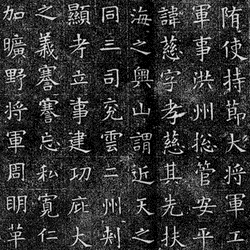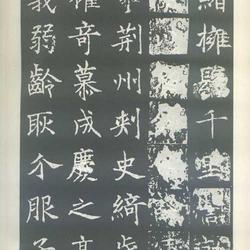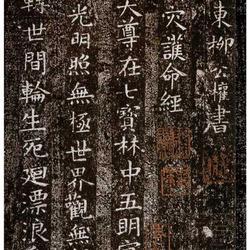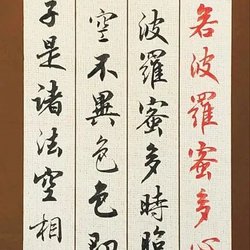








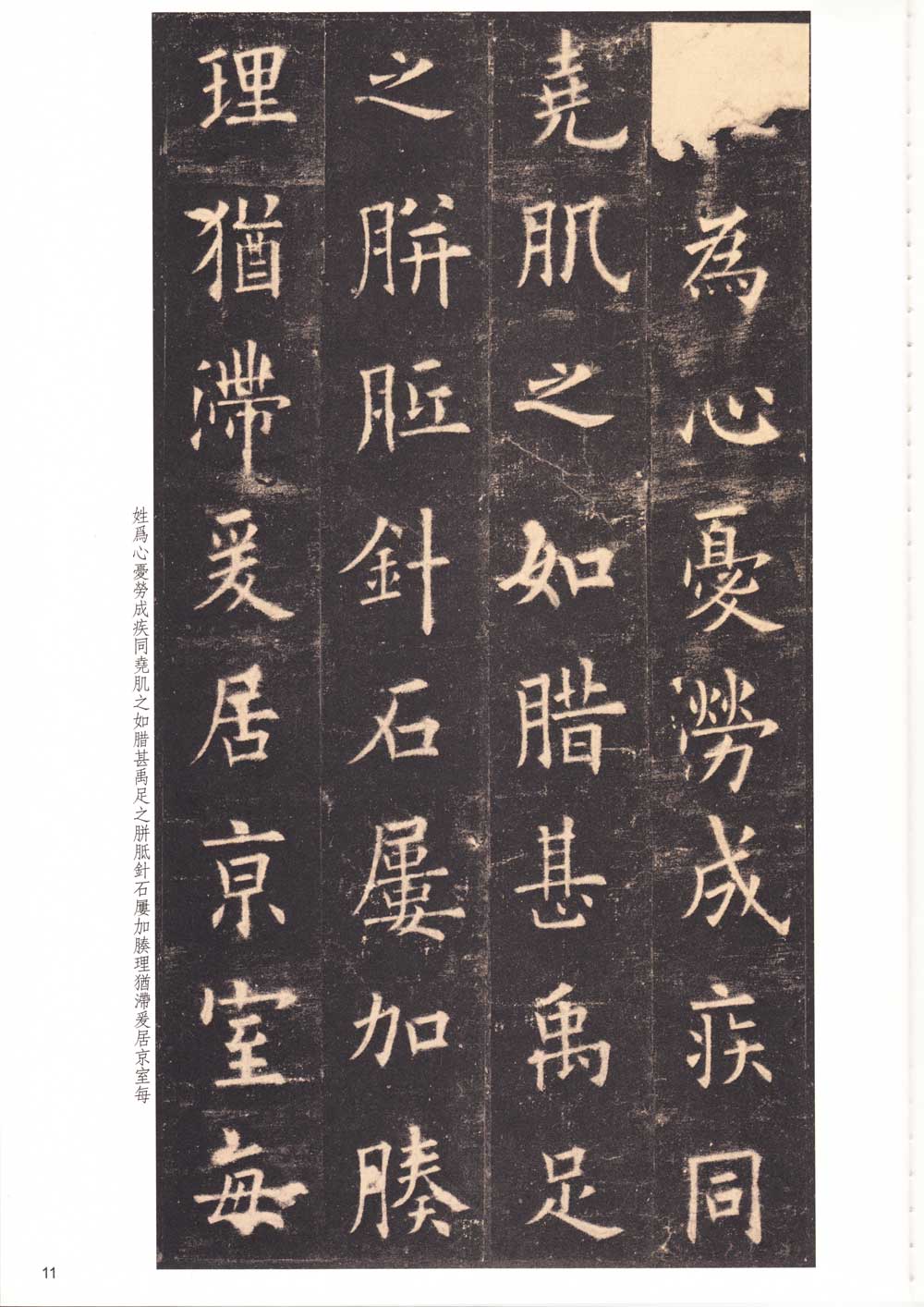



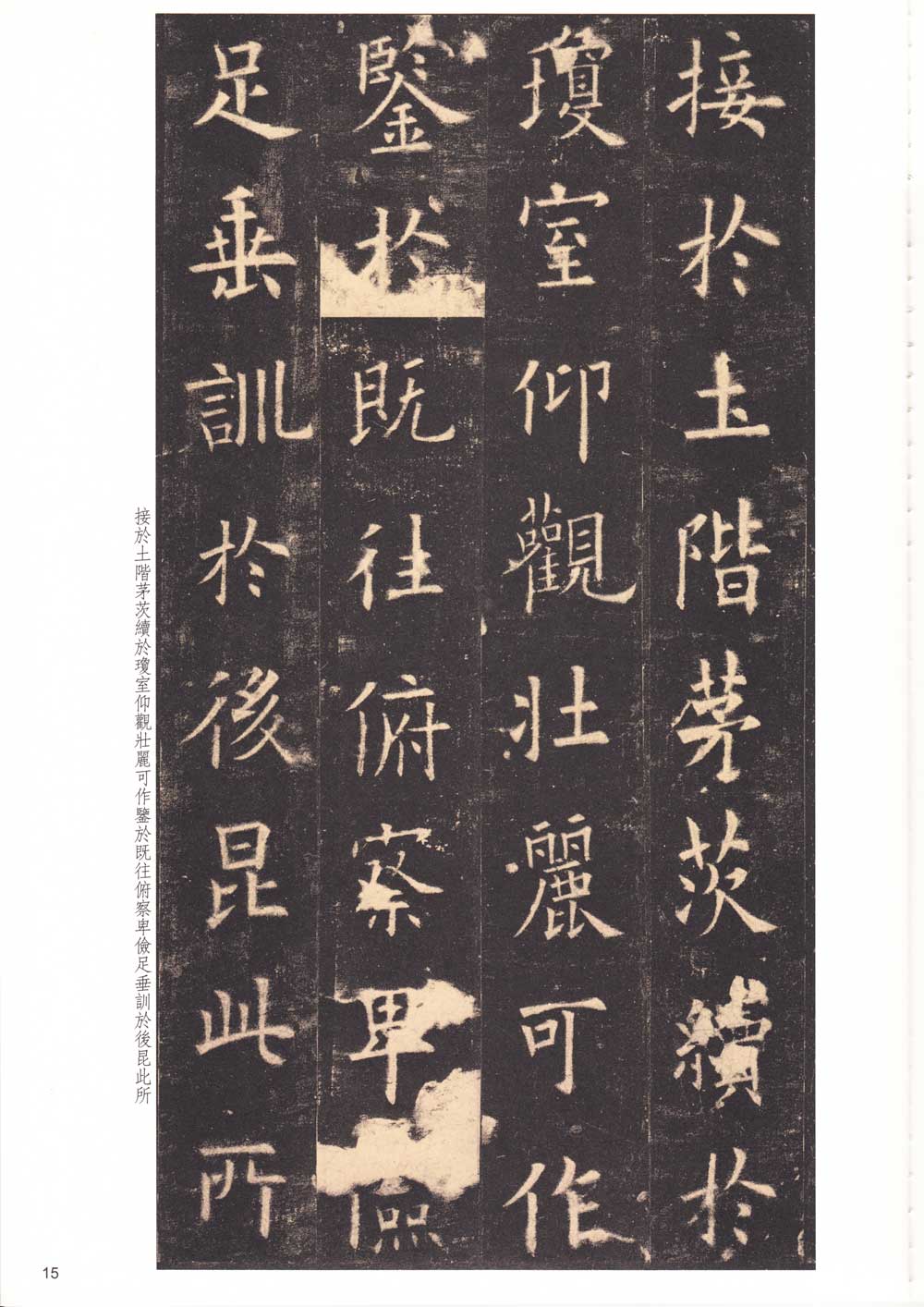
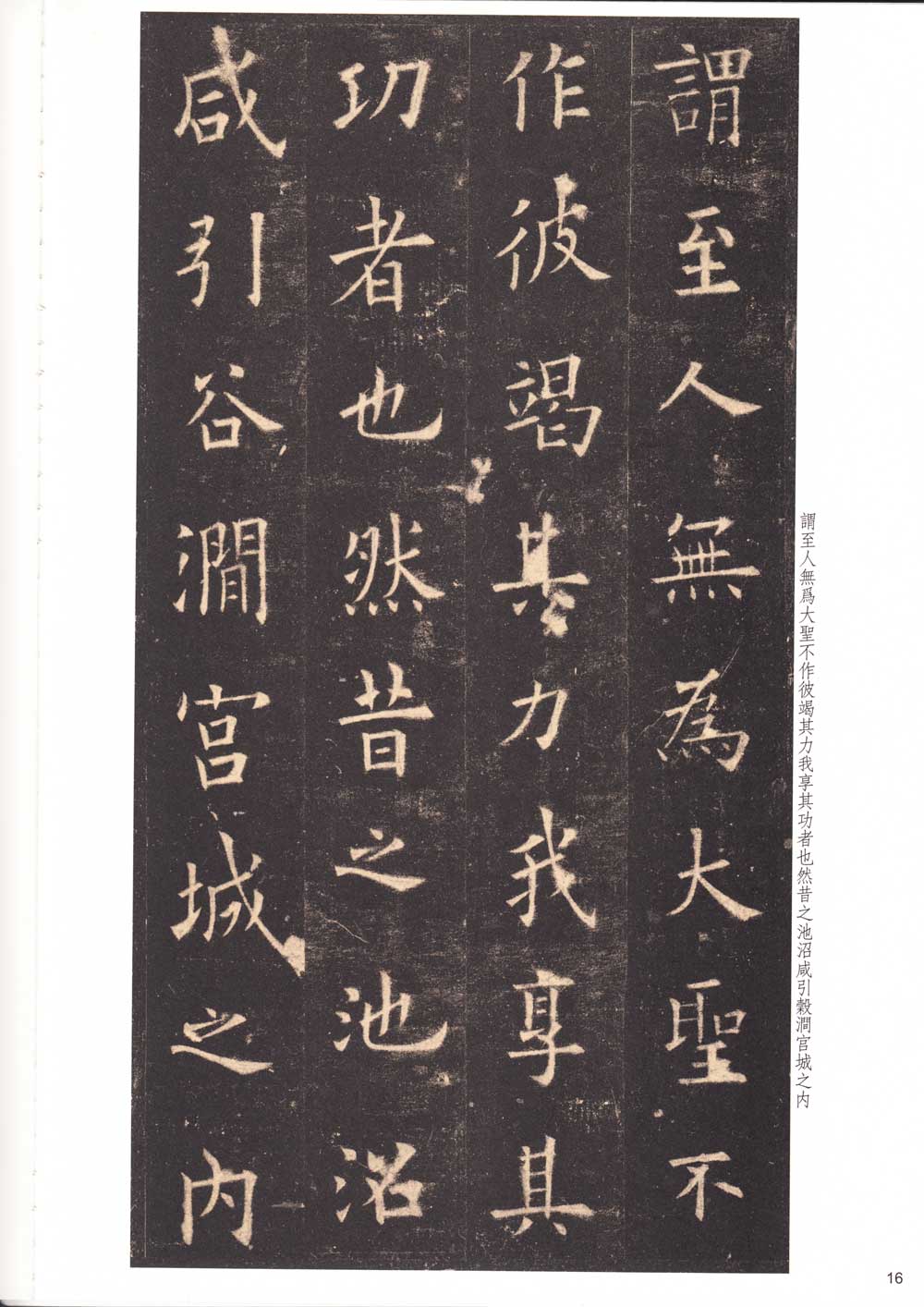






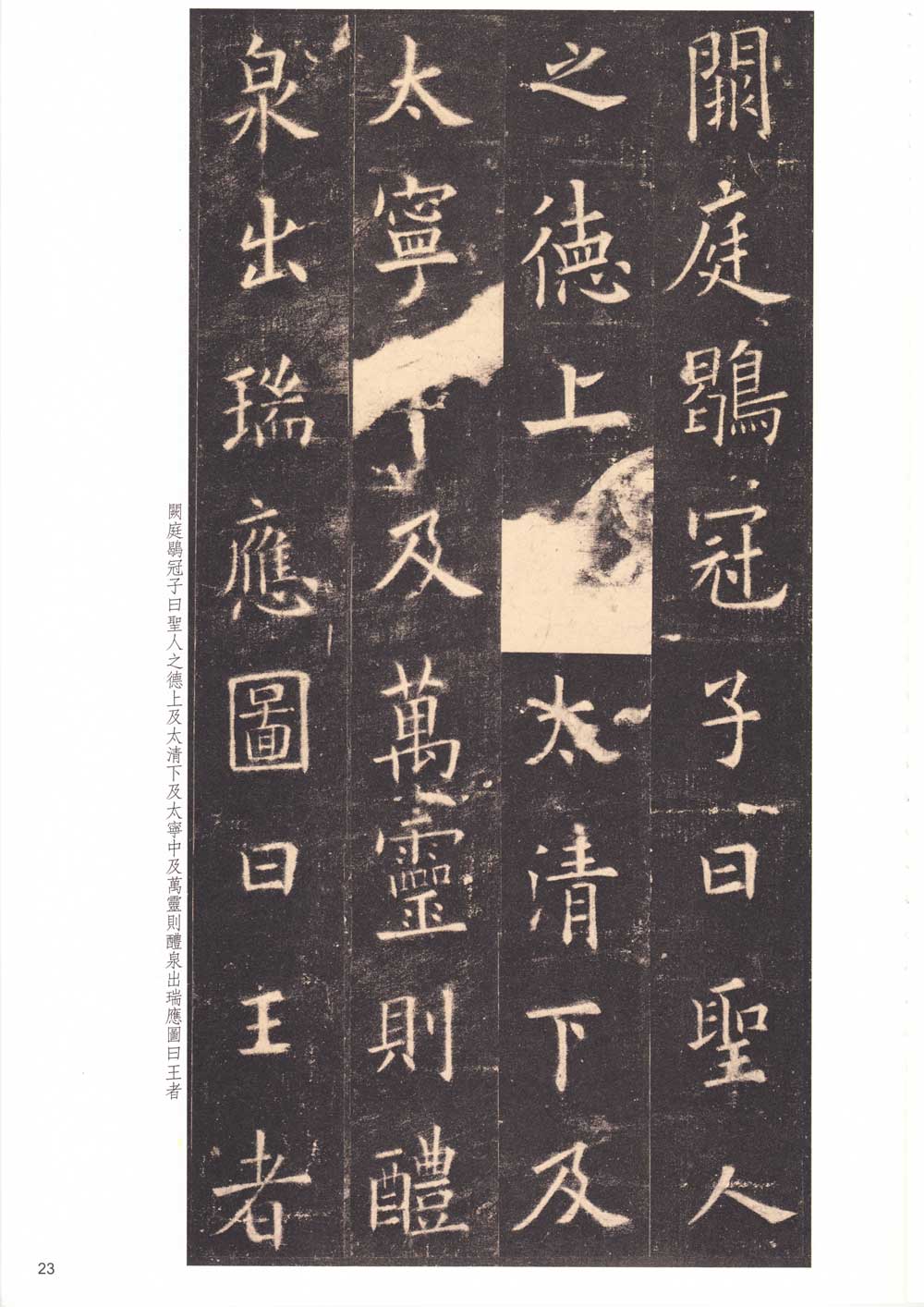

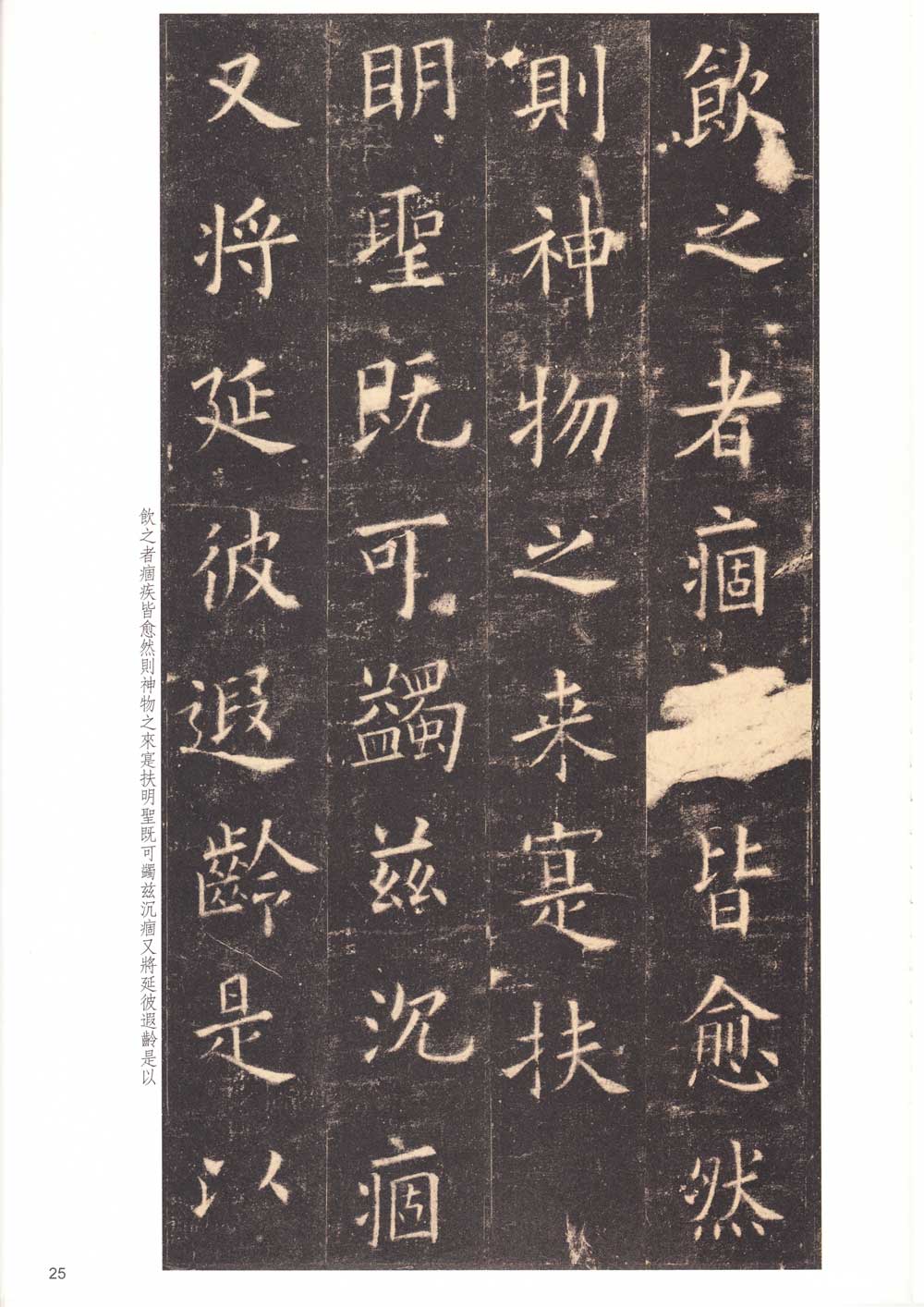

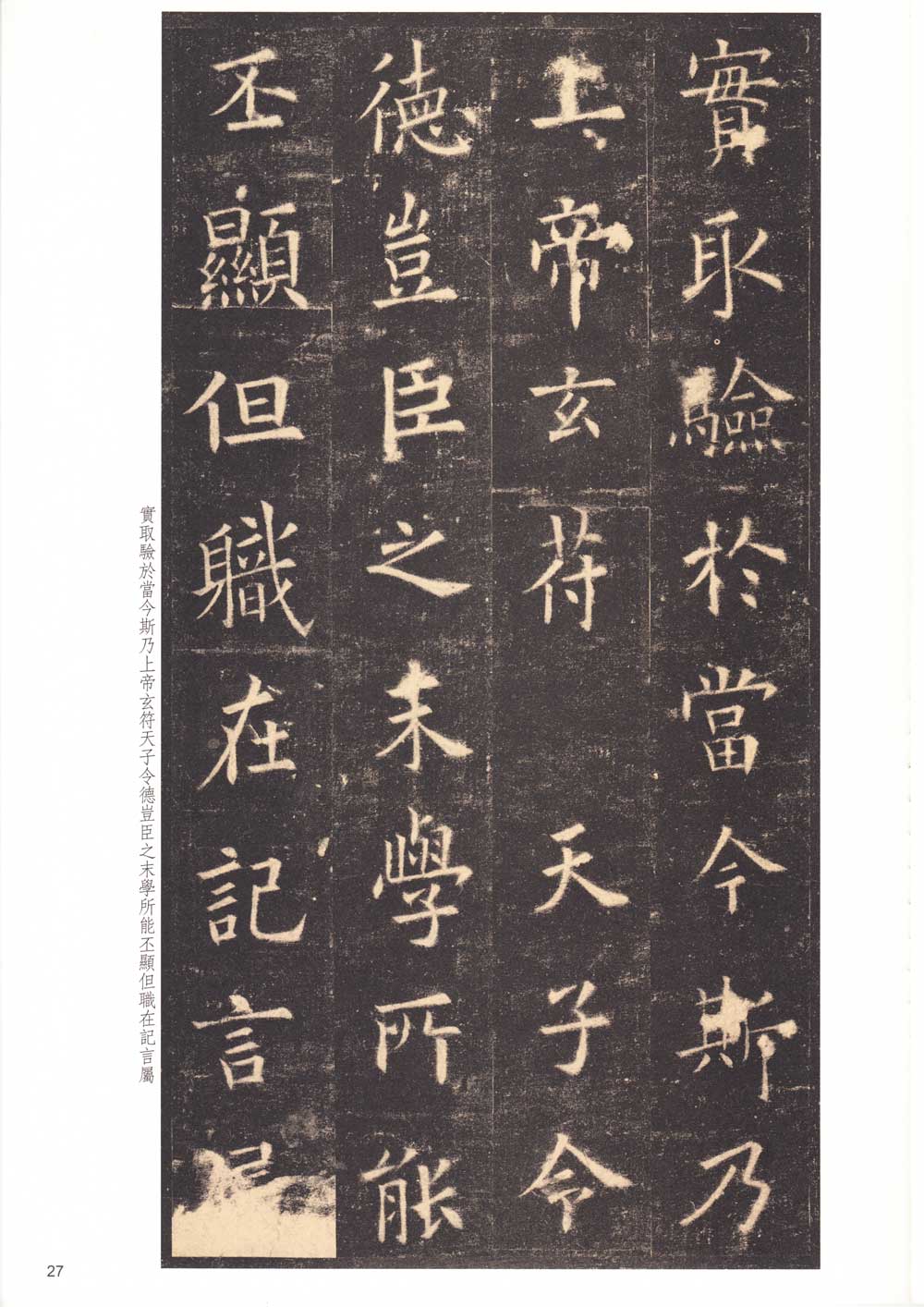


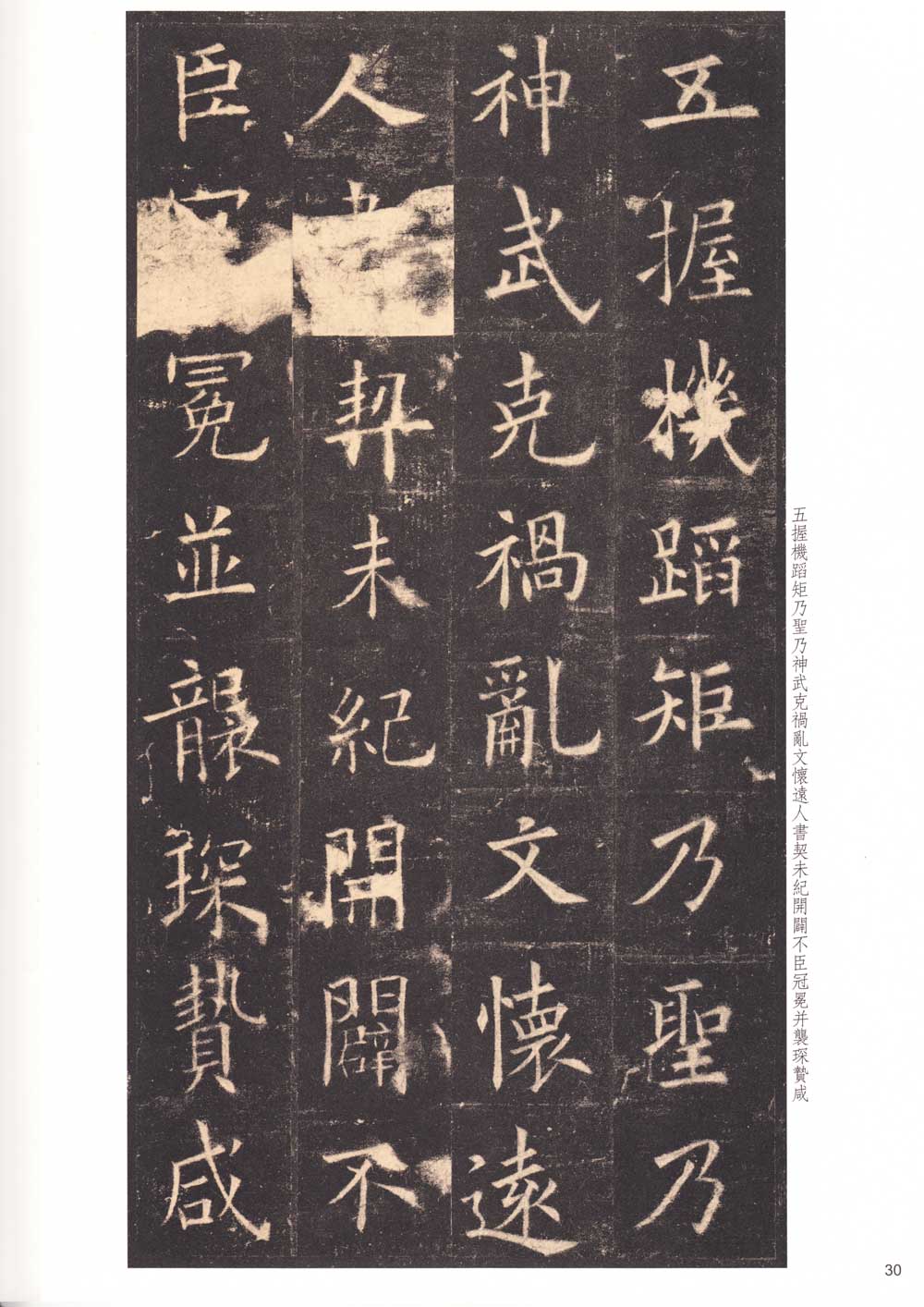







"Liquan Inscription of Jiucheng Palace" in regular script. The original stele is in Jiucheng Palace, Linyou, Shaanxi Province.
"The Monument of Liquan in Jiucheng Palace" was written by Wei Zheng, which records the discovery of spring water by Emperor Taizong of the Tang Dynasty when he was vacationing in Jiucheng Palace. This stele was erected in the sixth year of Zhenguan in the Tang Dynasty (632 AD). The stele is 2.7 meters high, 0.27 meters thick, 0.87 meters wide at the top, and 0.93 meters wide at the bottom. The whole stele has a total of 24 lines, with 49 characters in each line. The stone still exists today, but it has been gouged out too much and is no longer its original appearance. The best rubbings handed down from generation to generation are the Song rubbings collected by Li Qi from the Ming Dynasty and now in the Palace Museum in Beijing. The body of the stele and the head of the stele are integrated, and the head of the stele is surrounded by six dragons. There are six characters "Jiucheng Palace Liquan Ming" in official script on the front. The base of the monument has been damaged.
Linyou County, Shaanxi Province is 160 kilometers northwest of Xi'an. The Sui Dynasty built the Renshou Palace, a summer palace, and the Tang Dynasty rebuilt it into the Jiucheng Palace. At that time, the city of Chang'an was short of water resources, and the palace relied entirely on "drawing water up the mountain with wheels" from the river. In 632 AD, when Li Shimin was walking in the shadow of the four cities of Jiucheng Palace, he found a piece of land that was relatively moist. When he used a stick to channel it, water flowed out. So they dug a well into the ground and named it "Liquan", which means the water is as sweet as wine. Everyone was extremely happy and thought it was an auspicious sign. So Wei Zheng wrote the inscription, Ouyang Xun wrote it, and craftsmen carved it on the stone. Wei Zheng's inscriptions describe the grandeur of Jiucheng Palace's architecture, the great achievements of Emperor Taizong of the Tang Dynasty, the discovery of Liquan, and its auspicious significance. In particular, the second half of the inscription is Wei Zheng's political proposition for governing the country and ensuring peace, and it still has reference value to this day. The famous sayings "The yellow house is not expensive, but the world is worried" and "When you are high, your thoughts are down, and you are full of precepts" come from this stele.
"Jiucheng Palace Liquan Inscription" fully embodies Ouyang Xun's calligraphy characteristics of rigorous structure, roundness and elegance. The calligraphy of this stele is noble and solemn, with strict rules, the strokes are like square and round, the structure is rigorously arranged, and the top and bottom are connected. Overturning, bowing to the left and yielding to the right, the part is dangerous but the whole is dignified, without any disorder or loose stroke. The writing style is square, compact, steady and dangerous. Chen Jiru of the Ming Dynasty once commented: "This post is like a person in the mountains. He is thin, hard and cold, but full of energy. It can make the king bend his knees. He can only drive it if he inscribes it." Zhao Han of the Ming Dynasty called this stele in "Graphite Engraved Flowers" The official book is number one." "Jiucheng Palace Liquan Ming" is cautious and rigorous in writing, without excessive expression. It is regarded as "the ultimate principle of regular script", that is to say, it is the starting point and end point of regular script research, and it is a model for calligraphy scholars of all ages.
"Jiucheng Palace Liquan Inscription" is the work of Ouyang Xun when he was seventy-five years old. It best represents his calligraphy level. ."

